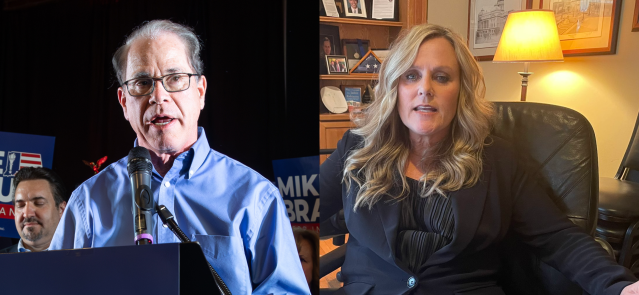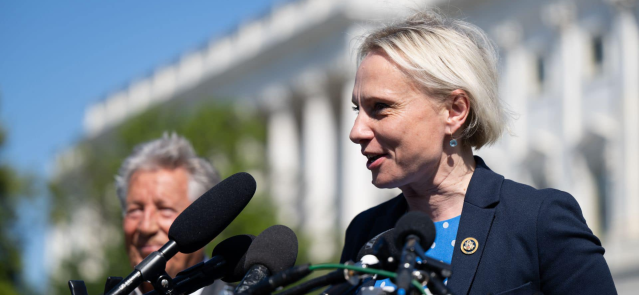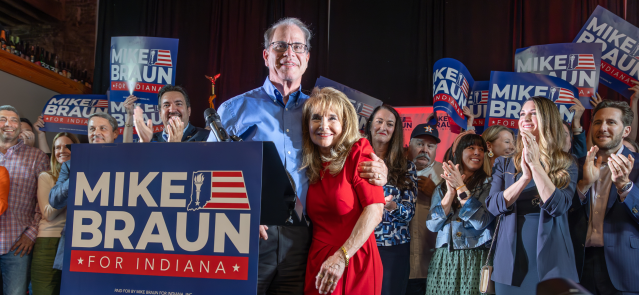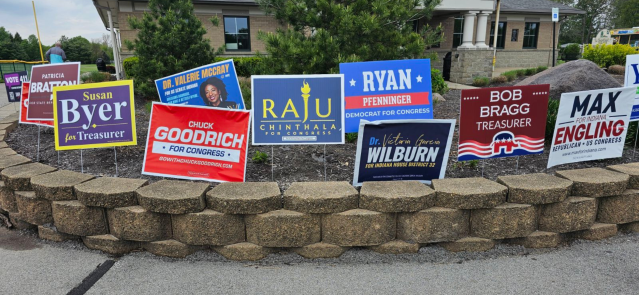Stay ahead of the curve as a political insider with deep policy analysis, daily briefings and policy-shaping tools.
Request a DemoAs Indiana preps for near-universal school choice, the program has already grown
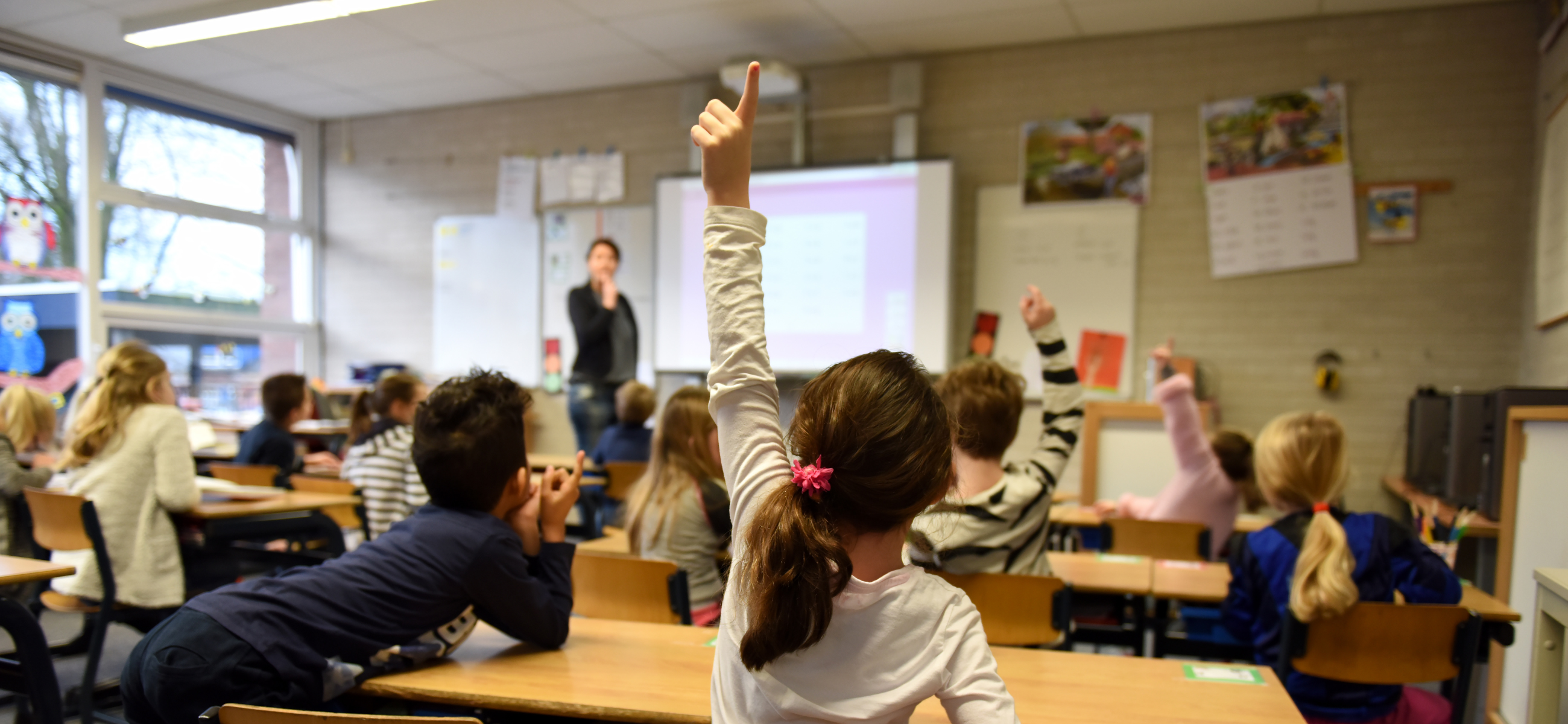
Students raise their hands in a classroom. (Credit: Arthur Krijgsman)
Eligibility for Indiana’s school choice voucher program is poised to dramatically increase next school year, enabling roughly 97% of students to use state money to attend private schools, according to school choice advocates.
State lawmakers have slowly expanded the program since they implemented it more than a decade ago. The state released its annual school choice report last month which provides insight into where the program stands ahead of arguably its largest expansion to date.
Already, between the 2021-2022 school year and the 2022-2023 school year, the cost to state taxpayers for the program grew by 30%, the report shows. That’s before the latest eligibility expansion goes into effect.
The 2022-2023 school year was the state’s largest increase in the number of students claiming vouchers since the 2014-2015 school year.
What’s changing?
This past school year, a family of four had to earn around $154,000 per year or less for a student to qualify to receive state money to attend a private school. In the two-year state budget passed in April, lawmakers expanded the eligibility to allow those making 400% of the income required to qualify for free or reduced-price lunches to participate in the school choice program.
Likewise, state lawmakers simplified eligibility by removing other requirements.
That means a family of four earning up to $220,000 per year will qualify this upcoming year, including students who have already been attending private school on their family’s own dime. Robert Enlow, the president and CEO of EdChoice, called Indiana’s program “effectively universal.”
“It’s unfair to pay twice, once in taxes and once in tuition,” Enlow said. “[The new policy has] basically said to almost every parent in the state of Indiana that we trust your choices.”
Costs for the program are expected to balloon by more than 70% in the first year. By fiscal year 2025, the state will spend an estimated $600 million on vouchers per year.
Here’s how parents can apply for the vouchers. The new eligibility requirements don’t kick in until the end of June.
Democrats and public school advocates expressed concerns during the legislative session that the expansion siphons away dollars that otherwise would be going toward the traditional public school system. In the two-year budget, the overall spend on school vouchers is expanding far more rapidly than the spend for traditional public schools, despite inflation.
Other opponents of school choice stress that private schools aren’t beholden to the same standards as traditional public schools, often are religious and don’t have to accept every student.
“Man, kids whose families make $220,000 a year, do you think they really need us to help them go to private school?” Senate Minority Leader Greg Taylor asked on the last day of the legislative session. “I’m just flabbergasted at how we continue to go down this path.”
Still, the House Republican caucus, which championed the expansion, philosophically believes that parents should be able to choose where to send their students and that state money should follow the student wherever they go.
Who is already participating?
Roughly 53,000 students used state-funded vouchers during the 2022-2023 school year, an increase of 20% from the prior school year. The state estimates that number will almost double by 2025 under the new eligibility requirements.
Right now, fewer than 5% of Indiana students rely on vouchers.
On average, a student using a voucher is white, has never attended a public school and lives in metropolitan areas of the state.
The program is increasingly likely to benefit white students who come from families with higher incomes, the report shows. Between the 2021-2022 and 2022-2023 school years, the percentage of voucher students who are white grew, while the percentage of voucher students who are Black decreased. (For now, the opposite is happening across Indiana’s entire education system).
Meanwhile, the average household income is just under $82,000 for those who applied using household income, an increase of more than $13,000 from the prior school year. A little more than a quarter of students who applied using their incomes come from households with incomes below $50,000.
What’s next?
The budget was a step toward fully funded universal school choice, but more changes could be in the pipeline years down the road. Two other states have funded universal school choice, and the General Assembly has proven it’s open to an expansion when it approved the state budget by a wide margin.
Any additional expansion would likely occur during the next budget cycle in 2025 when a new governor is in the Statehouse. Republican gubernatorial candidates Lt. Gov. Suzanne Crouch, Eric Doden and Sen. Mike Braun have voiced their support for universal school choice.
Jennifer McCormick, the only Democrat to enter the race, has indicated Indiana has gone too far and vouchers are “expanding at a pace that is very concerning.”
Contact Kaitlin Lange on Twitter @kaitlin_lange or email her at [email protected].
Twitter @StateAffairsIN
Facebook @stateaffairsin
Instagram @stateaffairsin
LinkedIn @stateaffairs
Header image: Students raise their hands in a classroom. (Credit: Arthur Krijgsman)
Read this story for free.
Create AccountRead this story for free
By submitting your information, you agree to the Terms of Service and acknowledge our Privacy Policy.
How McCormick, Braun view abortion, taxes and other key issues
A Democrat-turned-Republican and Republican-turned-Democrat will soon face off in the race to become Indiana’s next governor.
Sen. Mike Braun, who voted as a Democrat prior to 2012, captured the Republican nomination in Tuesday’s primary. Jennifer McCormick, formerly a Republican Superintendent of Public Instruction, will represent the Democrats.
Voters will decide the state’s next chief executive in November.
A State Affairs analysis of the candidates’ campaign platforms and public statements found key differences — and a few similarities — in their planned approaches to a variety of issues impacting Hoosier voters.
Here is how they match up.
Abortion
Braun: As a senator, Braun has long supported abortion restrictions.
In 2020, he called for the Supreme Court to re-examine Roe v. Wade.
In 2023, he proposed federal legislation that would have required parental notification before any unemancipated minor could seek an abortion. He said at the time: “Hoosiers put their trust in me to stand up for the unborn, and that’s what I’ve been proud to do every day in the Senate.”
He has since signaled support for the state’s abortion ban. His platform reads: “State lawmakers must work to ensure the gains we have made to protect life are secured and strengthened.”
McCormick: In a Tuesday interview with State Affairs, McCormick said her candidacy represented a referendum on reproductive rights.
“I’m going to fight to restore those rights under any authority I can, working in a bipartisan fashion, using our committees, board and our agencies. I also know, too, what everybody’s fear is: that they’re [Republicans] not going to restore those rights and will take [restrictions] further.”
From her platform: “Indiana’s Republican-led extreme abortion ban has taken away the right of women to make deeply personal decisions regarding their own health care.”
Marijuana
Braun: At a March 26 Republican primary debate, Braun suggested an openness to legalizing medicinal marijuana.
“It’s gonna hit all of us. I’m gonna listen to law enforcement — they have to put up with the brunt of it,” he said. “Medical marijuana is where I think the case is best made that maybe something needs to change. But I’ll take my cue from law enforcement there as well. … I hear a lot of input where [medical marijuana is] helpful, and I think that you need to listen and see what makes sense.”
McCormick: The Democrat’s platform also addresses medical marijuana legalization, while speculating on possible recreational use.
“We will fight for the legalization of medical marijuana as a source of state revenue established on a well-regulated marketplace and monitored by a Cannabis Task Force in order to study the issues, opportunities and potential obstructions associated with recreational marijuana legalization.”
McCormick said she would also support expunging low-level marijuana-related convictions.
Taxes
Braun: At a March 19 National Federation of Independent Business forum, Braun said the state’s property tax system “went out of whack because it couldn’t respond to inflation like we’ve never seen before.”
“The way you finance any lower taxes would be to bank on the government being run more efficiently,” he said.
His platform also calls for government spending cuts to finance lower taxes: “Reducing the size of government is the key to cutting taxes, and Mike Braun will work through every state agency to find ways to save money while delivering high-quality services to taxpayers.”
McCormick: McCormick also spoke about taxes at the March 19 forum.
“I agree with a revamp of our taxing system,” she said. “But also it’s about not just how we’re getting our revenue, it’s about our expenditures. Yes, we need to fix our gas tax. Yes, we need to look at the income tax. But here’s the thing: There are hidden taxes we’re not having a conversation about.”
Her platform also references the possibility of combining state agencies as a way to save money.
Education
Braun: In his platform, Braun supports broadening school choice and parental rights.
“As a former school board member, Mike Braun knows parents are the primary stakeholders in their children’s education and every family, regardless of income or zip code, should be able to enroll in a school of their choice and pursue a curriculum that prepares them for a career, college or the military,” the platform reads.
Braun also pledged to ensure critical race theory and discussions about gender are banned in public schools.
McCormick: Education is one of McCormick’s primary issues, according to her platform.
She calls for the elimination of statewide testing, increased early childhood reading and child care options and a minimum base salary of $60,000 for all K-12 teachers.
McCormick also addresses the state’s school choice movement.
“We will call for a pause in the expansion of school privatization efforts while requiring fiscal and academic accountability and transparency for all of Indiana schools that receive public tax dollars,” her platform reads.
U.S.-Mexico border
Braun: Braun’s television ads have touched on border security, and his platform calls for increased focus on the area.
“Joe Biden and the left have created a humanitarian and national security crisis on our southern border,” the platform reads. “As governor, Mike will continue to support and enact the America First policies that were working. Otherwise, every town will become a border town.”
McCormick: McCormick’s border-related plans are more focused on facilitating legal immigration.
“We will work with local, state and federal officials in supporting an immigrant system that creates a safe, timely, orderly and humane pathway for those seeking legal immigration while keeping our communities and those responsible for border security safe,” her platform reads.
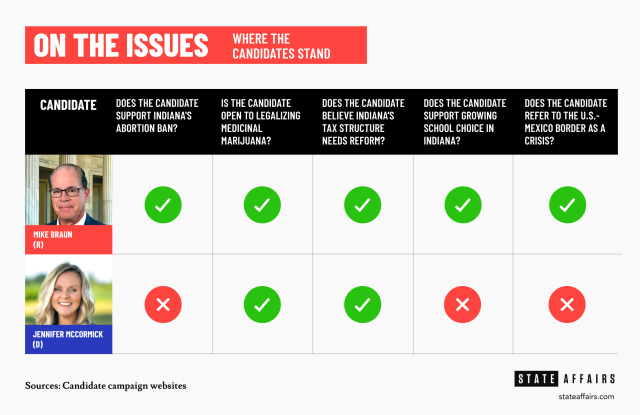
Contact Rory Appleton on X at @roryehappleton or email him at [email protected].
Spartz, Shreve, Stutzman win Republican congressional primaries
A central Indiana congresswoman successfully fought off eight primary challengers, while crowded races for three other Republican-leaning congressional districts began to clear in Tuesday’s primary election. And in northeastern Indiana, a former congressman held on in a tight race as he seeks to return to Congress. All of the state’s nine U.S. House of Representatives …
Mike Braun wins the Indiana Republican nomination for governor
U.S. Sen. Mike Braun was declared the winner of the Republican gubernatorial nomination shortly after polls in Indiana’s Central Time Zone closed. With 98% of votes counted as of Wednesday morning, Braun had 39.6%, followed by Lt. Gov. Suzanne Crouch with 21.8%, Brad Chambers with 17.5%, Eric Doden with 11.9 %, Jamie Reitenour with 4.8% …
Here’s how to vote in Indiana’s primary election
Thousands of Hoosier voters will head to the polls Tuesday, May 7, for Indiana’s primary election. This year’s ballot includes a competitive contest for governor, as well as dozens of state and federal legislative races and a few school referenda. The primary will decide which candidates will represent their respective parties in the Nov. 5 …

